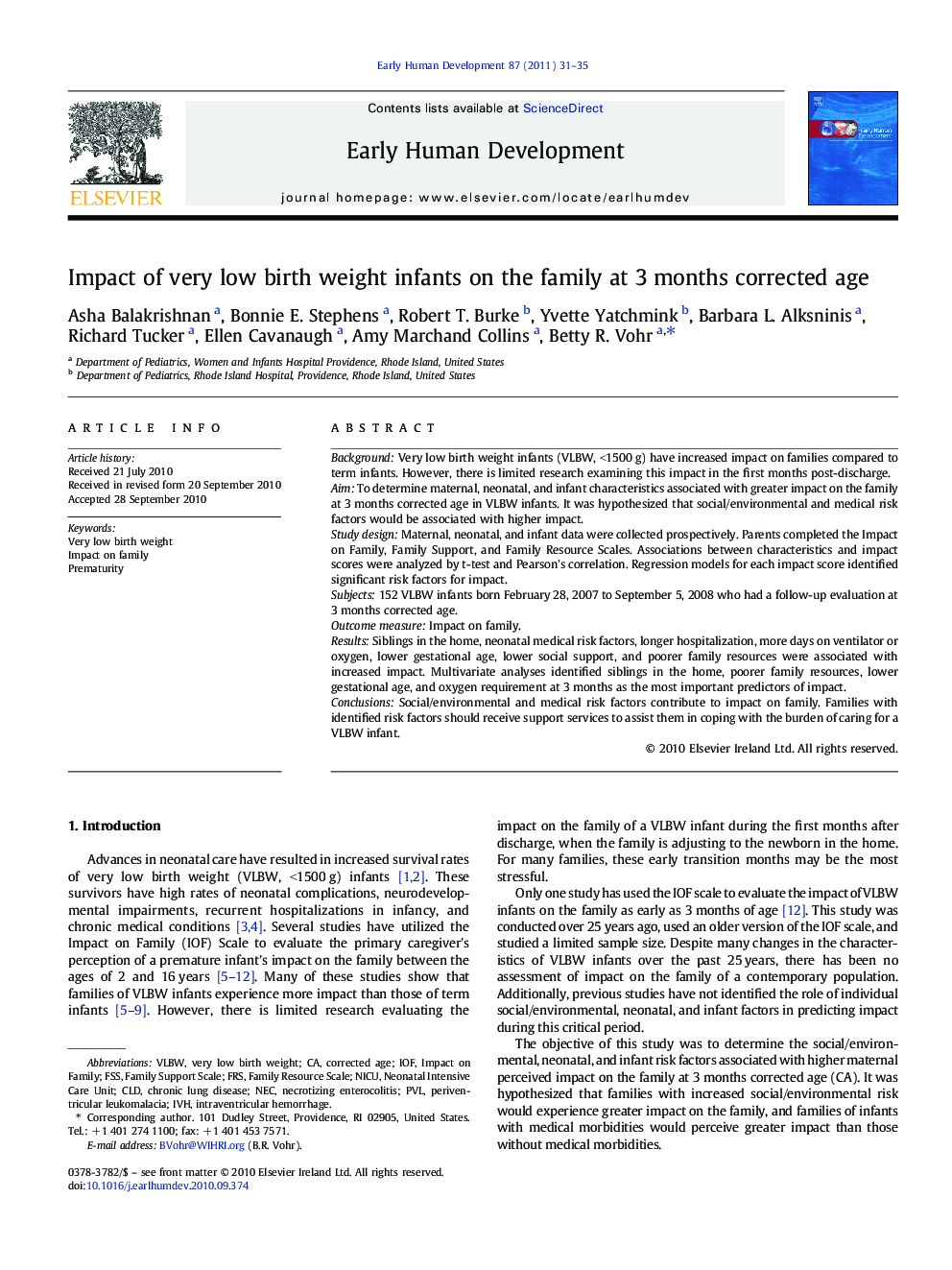| Article ID | Journal | Published Year | Pages | File Type |
|---|---|---|---|---|
| 3917366 | Early Human Development | 2011 | 5 Pages |
BackgroundVery low birth weight infants (VLBW, <1500 g) have increased impact on families compared to term infants. However, there is limited research examining this impact in the first months post-discharge.AimTo determine maternal, neonatal, and infant characteristics associated with greater impact on the family at 3 months corrected age in VLBW infants. It was hypothesized that social/environmental and medical risk factors would be associated with higher impact.Study designMaternal, neonatal, and infant data were collected prospectively. Parents completed the Impact on Family, Family Support, and Family Resource Scales. Associations between characteristics and impact scores were analyzed by t-test and Pearson's correlation. Regression models for each impact score identified significant risk factors for impact.Subjects152 VLBW infants born February 28, 2007 to September 5, 2008 who had a follow-up evaluation at 3 months corrected age.Outcome measureImpact on family.ResultsSiblings in the home, neonatal medical risk factors, longer hospitalization, more days on ventilator or oxygen, lower gestational age, lower social support, and poorer family resources were associated with increased impact. Multivariate analyses identified siblings in the home, poorer family resources, lower gestational age, and oxygen requirement at 3 months as the most important predictors of impact.ConclusionsSocial/environmental and medical risk factors contribute to impact on family. Families with identified risk factors should receive support services to assist them in coping with the burden of caring for a VLBW infant.
